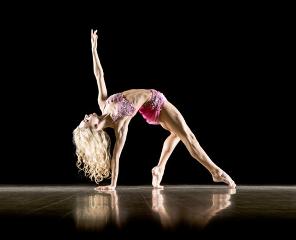Who wouldn’t want a dancer’s body? They generally have slim, lean, and strong physiques. A recent study published in the American Journal of Sports Medicine tested the lower-body endurance of 40 elite ballet dancers and 40 top football players – they found that the dancers took way longer than the team athletes to fatigue; dancers may make things look easy on stage, but they are seriously fit.
The good news is that having the body of a dancer isn’t unattainable; it’s entirely possible to achieve that silhouette without actually being a dancer. It’s all about studying how dancers exercise and adapting your workout to incorporate some specific techniques.
Do cardio every day
To look like a dancer you need to be at a healthy weight and regular cardio can help with that. Even if you don’t need to lose weight, cardio is good for your heart and will help you stay lean and keep your metabolism stoked. There are plenty of options – you may be a natural on the running machine, but lower impact machines like the rower or cross-trainer are just as effective. One of the ways that ballet dancers get their hearts racing is by jumping which isn’t just a form of cardio, but also engages the abs. Why not try incorporating some jumps into your routine? They can help with abdominal and leg strength as well as burning calories and sculpting some enviable muscle.
Strength train
If you want to be lean and toned, strength training has to be on your radar. Most women lack the body type necessary to build large muscles because they produce much less testosterone than men, so a fear of bulking up shouldn’t put them off using weights. If you want to stay very lean, use light weights and high repetitions. Make sure you use a weight that is light enough for you not to complete the exercise until around repetition number 18-20. Free weights, kettle bells and squat racks are your best friends here – you can make the training even more effective by involving a Swiss ball or Bosu balance trainer to challenge your core at the same time.
Remember, though, that lifting heavier weights has a longer lasting benefit in terms of helping you stay lean. Male dancers will benefit from using powerlifting belts to aid with strength focused lifting. Weight training results in significant improvement in adductor strength, lateral hip flexibility and anaerobic power. It also leads to improvement in muscular endurance, precision and overall technique.
Take it slow
A killer core workout that ballet dancers do daily is something called ‘adagio’. During this exercise, dancers use slow, sustained movements like lifting one leg whilst turning. These super slow movements force their cores to keep readjusting to accommodate their shifts in weight and direction. In other words, it's a painfully slow workout (but in a good way!). You may not want to attract the sort of raised eyebrows that busting some Swan Lake style leg extensions at the gym might result in, but it’s entirely possible to incorporate some slow, sustained movements into your workout routine to gain those same benefits.
Isometric exercises involve supporting the weight of your own body while performing small movements. Each exercise requires only tiny movements of the targeted body part – we’re talking centimeters at a time; the strain of holding muscles in a fixed position strengthens them. Wall push-ups work arm and shoulder muscles while tiny curls target the core abdominal muscles.
And here’s the fun bit
If you want a dancer’s body – of course you can have fun and actually dance! Getting your groove on torches the calories and the sporadic movements required mean that different muscles are activated – from quadriceps and hamstrings to back and core, hip and glutes down to calves and feet. It doesn’t have to be ballet or modern, you can look at salsa, tango, ballroom or maybe capoeira; the options are endless and you’re bound to find something that appeals.
Although ballet dancers often appear to be effortlessly dancing on air, the reality is that it’s incredibly physically demanding. Male dancers need powerful arms, legs and backs in order to perform lifts and leaps. Ballerinas require extremely strong lower bodies in order to carry off elegant turns and en-pointe poses. Targeted weight-training exercises are key to helping dancers stay strong enough for their art and you can learn a great deal from how they train in your quest for a gorgeous dancer’s bod.
Sally Writes


 Active Sitting
Active Sitting


